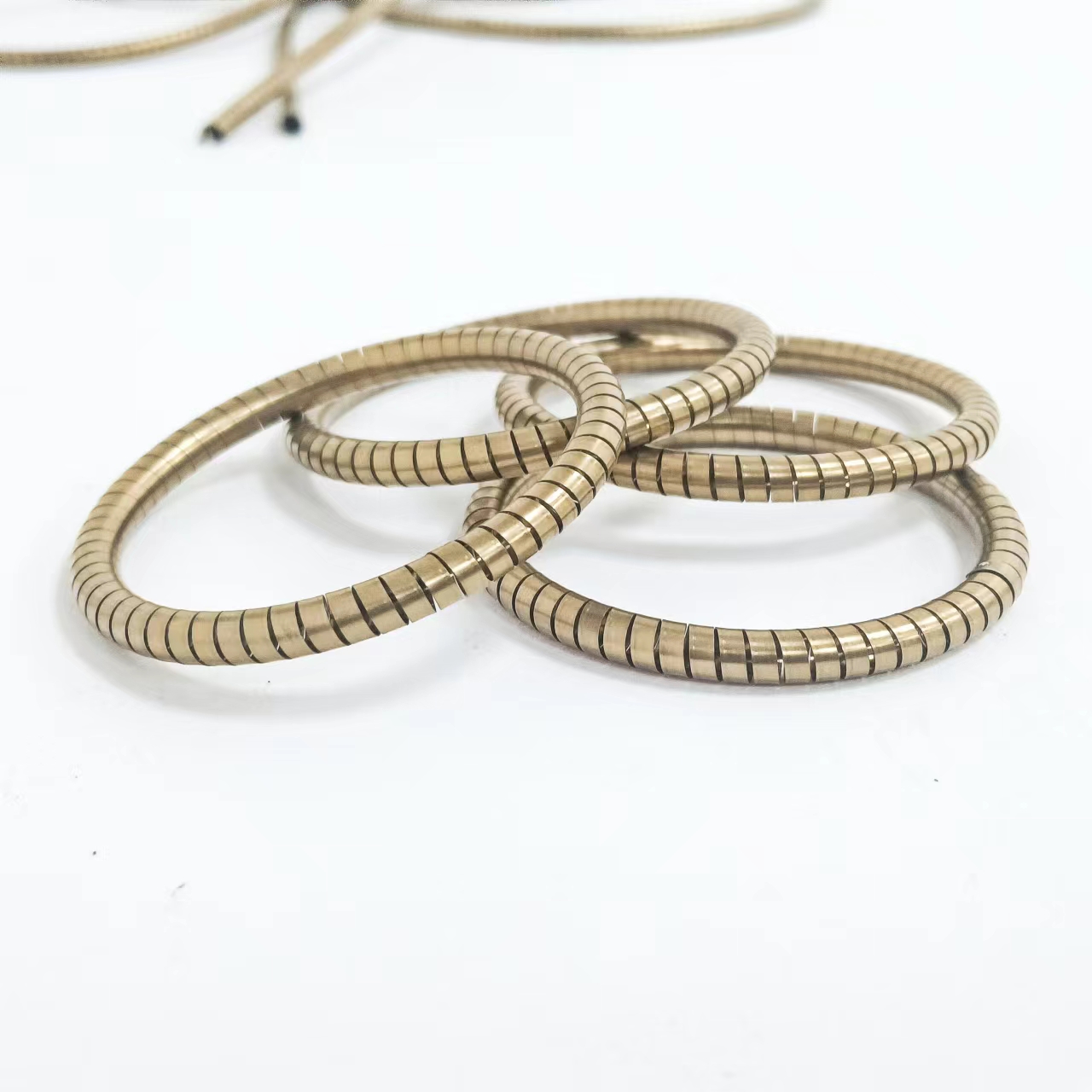According to the nature of the force, springs can be divided into tension springs, compression springs, torsion springs, and bending springs. They can be divided into disc springs, ring springs, plate springs, spiral springs, truncated vortex springs, and torsion bar springs according to their shape. They can be divided into cold coil springs and hot coil springs according to their production process. Ordinary cylindrical springs are most widely used due to their simple manufacturing and the ability to be made into various types according to load conditions, as well as their simple structure. Generally speaking, the manufacturing materials of springs should have high Elastic Limit, Fatigue limit, impact toughness and good heat treatment performance.
The common materials include carbon spring steel, alloy spring steel, stainless spring steel, copper alloy, nickel alloy and rubber. There are two manufacturing methods for springs: cold coil method and hot coil method. Spring wire with a diameter less than 8 mm is generally rolled using the cold rolling method, while those with a diameter greater than 8 mm are rolled using the hot rolling method. Some springs require strong pressure or shot peening treatment after production, which can improve the bearing capacity of the spring.
① Control the movement of machinery, such as valve springs in internal combustion engines, control springs in clutches, etc.
② Absorb vibration and impact energy, such as buffer springs under cars and train carriages, vibration absorbing springs in couplings, etc.
③ Store and output energy as power, such as clock springs, springs in firearms, etc.
④ It is used as a force measuring element, such as a force measuring device, a spring in a Spring scale, etc. The ratio of load to deformation of a spring is called spring stiffness, and the greater the stiffness, the harder the spring.
Spring is a widely used elastic component in the mechanical and electronic industries. When loaded, a spring can generate significant elastic deformation, converting mechanical work or kinetic energy into deformation energy. After unloading, the deformation of the spring disappears and returns to its original state, converting deformation energy into mechanical work or kinetic energy.

Measurement function
We know that within the elastic limit, the elongation (or contraction) of the spring is directly proportional to the external force. The Spring scale is made by using the property of spring.
Reset function
The spring undergoes deformation under external force, and after the external force is removed, the spring can recover its state. Many tools and equipment utilize the property of springs to reset. For example, many building doors have reset springs installed on their hinges. When people enter or exit, the doors will automatically reset. People also use this function to make automatic umbrellas, Mechanical pencil and other supplies, which are very convenient. In addition, various buttons and buttons also require reset springs.
Driving function
Mechanical clocks and clockwork toys are all driven by tightening the spring. When the spring is tightened, it produces bending deformation and stores a certain amount of elastic potential energy. After release, the elastic potential energy is converted into kinetic energy, which is driven to rotate through a transmission device. The Toy gun and starting gun and military gun also use one of the springs to work.
Buffer function
A spring is installed between the frame and wheels of a locomotive or car, which uses the elasticity of the spring to slow down the bumps of the vehicle.
Phonation function
When air flows from the spring holes in harmonicas and Accordion, it impacts the reeds, and the reeds vibrate to make a sound.
Tight pressing function
Observing various electrical switches, it can be found that one of the two contacts of the switch must be equipped with a spring to ensure close contact and good conductivity. If the contact is poor, the resistance at the contact will increase, the heat generated when the current passes through will increase, and in severe cases, the metal at the contact will melt. The two metal pillars of the bayonet lamp head are both equipped with springs for good contact; As for the central metal plate of the screw socket and the connecting metal plate of all sockets, they are all spring plates, and their function is to ensure close contact between both parties to maintain good consistency. In the cassette tape, there is a Phosphor bronze reed, which makes the magnetic head contact with the tape closely by using the elastic force generated by its bending deformation.
There is a long spiral spring in the Stapler. On the one hand, it is used to push the staples tightly, and on the other hand, when the front nails are pushed out, the back nails can be sent to the front for comfortable push out. In this way, the nails can be pushed to the front automatically until all the nails are pushed out. Many machines feed automatically, and the bullets in Automatic rifle are loaded automatically by the function of springs. In addition, clips such as clothes clips, ballpoint pens, and the clip on the pen case are all clamped onto the clothes using the compression function of springs.